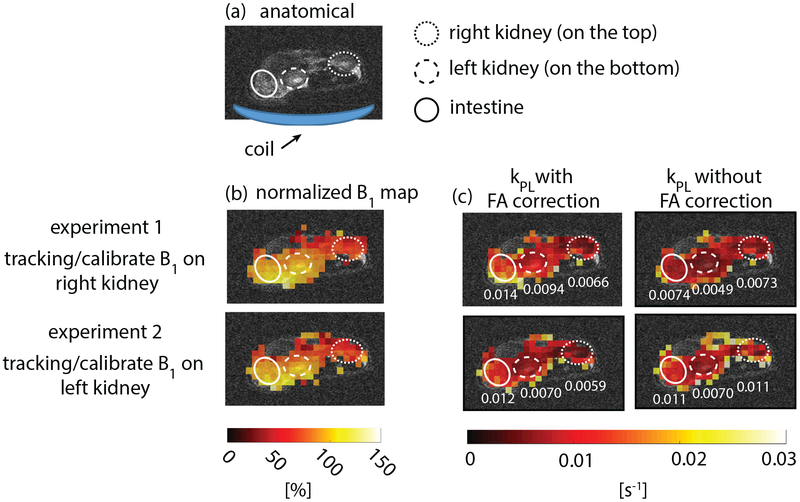Figure 6:
Results of two hyperpolarized [1-13C]pyruvate studies in a normal rat using the proposed method (Fig. 1) with a 13C surface transceiver coil. The two experiments were performed with the same parameters except for different tracking/calibrating ROIs: experiment #1 on right kidney and #2 was on left kidney, where the left kidney is closer to the coil. Injection time was 10 s and initial power was the same as the calibrated power in pre-scan. Sequence parameters are presented in Table 1. (a) Proton localizer. (b) Normalized 13C B1 maps. B1 maps acquired in two experiments are consistent. (c) Estimated kPL with and without flip angle correction based on measured B1 map. kPL values for left kidney, right kidney and intestine are labeled in the maps. Using acquired B1 maps to correct flip angle results in more consistent kPL estimations of those ROIs between the two experiments, demonstrating the importance of flip angle correction for kPL measurements. Experiment recordings: https://youtu.be/Mu3NW7Kog9M, https://youtu.be/fL5gVkPDw2o.

